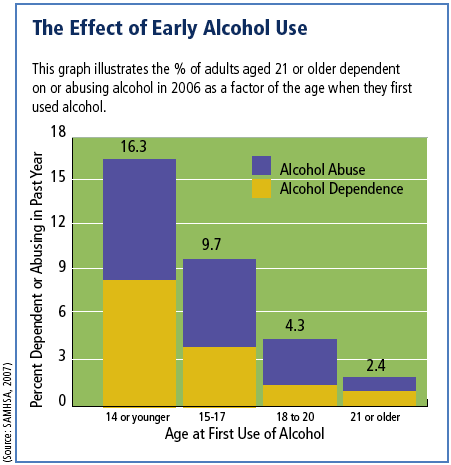
Research has revealed that there are many risk factors for developing a substance use disorder, each representing a challenge to the psychological and social development of an individual and each having a different impact depending on the phase of development.
Risk Factors
Factors in the family that may be critical in the development of substance use problems include:
- Chaotic home environments, particularly when parents abuse substances or suffer from mental illness;
- Ineffective parenting, especially with children who have difficult temperaments and conduct disorders; and
- Lack of mutual attachments and nurturing.
Other risk factors relate to children interacting with others outside of the family, specifically at school, with peers, and in the community. Some of these factor are:
- Inappropriate shy and aggressive behavior in the classroom;
- Failure in school performance;
- Poor social coping skills;
- Affiliations with peers exhibiting deviant behaviors; and
- Perceptions of approval of drug-using behaviors in the school, peer, and community environments.
Warning Signs for Problem Alcohol and other Drug Use
- Changes in school performance (falling grades, skipping school, tardiness)
- Changes in peer group (hanging out with drug-using, antisocial, older friends)
- Breaking rules at home, school, in the community
- Extreme mood swings, depression, irritability, anger, negative attitude
- Sudden increases or decreases in activity level
- Withdrawal from the family; keeping secrets
- Changes in physical appearance (weight loss, lack of cleanliness, strange smells)
- Red, watery, glassy eyes or runny nose not due to allergies or cold
- Changes in eating or sleeping habits
- Lack of motivation or interest in things other teenagers enjoy (hobbies, sports)
- Lying, stealing, hiding things
- Using street or drug language or possession of drug paraphernalia/items
- Cigarette smoking
Additional factors—such as the availability of substances, trafficking patterns, and beliefs that substance use will be generally tolerated—also influence the number of young people who initiate use.
Protective Factors
The National Institute on Drug Abuse reports some of the most salient protective factors, include:
- Strong bonds with the family;
- Experience of parental monitoring with clear rules of conduct within the family unit and involvement of parents in the lives of their children;
- Success in school performance;
- Strong bonds with pro-social institutions such as the family, school, and religious organizations; and
- Adoption of conventional norms about alcohol and drug use.
Researchers note “when people feel bonded to society, or to a social unit like the family or school, they want to live according to its standards or norms” (Hawkins et al., 1992). Furthermore, reports show that “strong norms, beliefs, or behavioral standards that oppose the use of alcohol or the use of illegal drugs by adolescents protect against drug use and abuse” (Hawkins, 2002).
Community Involvement in Prevention
An adolescent’s community, including family, teachers, coaches, and churches, has a responsibility to assist the adolescent to make healthy decisions. Research on factors and processes that increase the risk of using drugs or protect against the use of drugs has identified the following primary targets for preventive intervention: family relationships, peer relationships, the school environment, and the community environment. Each of these domains can deter the initiation of drug use through increasing social and self-competency skills, adoption of pro-social attitudes and behaviors, and awareness of the harmful health, social, and psychological consequences of drug abuse. Educating children about the negative effects of drugs, especially the most immediate adverse effects in their lives, is an important element in any prevention program. In addition, helping children become more successful in school helps them form strong social bonds with their peers, the school, and the community.

Highest Risk Periods for Youth
For most children, research has shown that the vulnerable periods for engaging in at-risk behaviors occur during transitions from one developmental stage to another. For example, when children advance from elementary school to middle school or junior high, they often face social challenges, such as learning to get along with a wider group of peers. Even day-to-day transitions between school and home make adolescents more vulnerable to misuse of alcohol and other drugs. There is an increase in substance use when adolescents are not engaged in school or other formal activities like summer and after school. Prevention programs need to provide support at each developmental stage and during transitions between stages.
Screening and Brief Intervention (SBI) is designed specifically for individuals using unhealthy or hazardous levels of alcohol—like binge drinking. Since most adolescents who use do so episodically and in a binge pattern (5 or more drinks per occasion), but are not dependent, SBI can be an effective approach to change behavior.
Research has shown that 6 months after adolescents receive brief interventions in emergency departments they have a 32% reduction in driving under the influence and 50% fewer alcohol-related injuries compared to adolescents who only receive educational materials (Monti et al., 1999).









